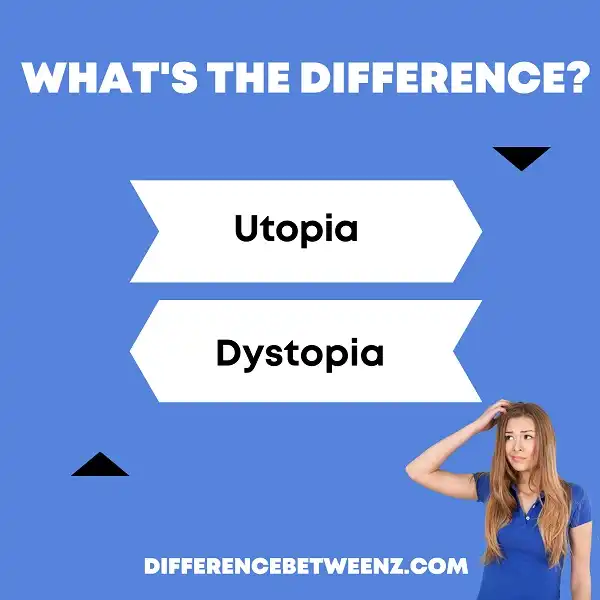In literature, there are two broad categories for settings: utopias and dystopias. Utopias are ideal societies, while dystopias are the opposite, with oppressive governments and shattered social structures. Though it is easy to see the difference in concept, it can be harder to distinguish between the two in practice. This blog post will explore the differences between utopias and dystopias using two novels as examples.
What is Utopia?
Utopia is an ideal society in which the social, political, and economic conditions are perfect. The word was first used in the early 16th century by Sir Thomas More in his book Utopia, which describes a fictional island community that enjoys peace and prosperity. Utopia has since been used as a literary device to explore issues such as social justice and economic inequality. In recent times, the concept of Utopia has been invoked in discussions of climate change, with some imagining a future in which humanity has overcome the environmental crisis and achieved ecological sustainability. Whether or not Utopia is achievable remains an open question, but the idea continues to inspire hope and possibility.
What is Dystopia?
Dystopia is a genre of speculative fiction that explores social and political structures in a world that has been greatly degraded or even destroyed. Dystopian works often reflect on issues of environmentalism, utilitarianism, gender, race, religion, technology, and other oppressive forces. Dystopian literature typically paints a picture of a society in which the protagonists must struggle against seemingly insurmountable odds in order to survive or create a better future. Although dystopian societies often appear to be nightmarish versions of our own world, they can also be completely alien landscapes populated by hostile creatures or advanced civilizations that have gone badly wrong. Dystopian fiction can be both cautionary and hopeful, showing us the potential for both utopia and disaster.
Difference between Utopia and Dystopia
- Utopia is a word that refers to an ideal society. The term was first used by Sir Thomas More in his book Utopia, which described a fictional island society with many utopian features, such as lack of poverty and crime. Utopian societies have often been proposed as a way to solve the problems of real-world societies.
- Dystopia, on the other hand, is a word that refers to an imaginary place where life is extremely bad because of pollution, poverty, or oppression. Dystopian societies are often used in fiction as a warning about the dangers of unchecked technology or government power. Some of the most famous dystopian novels include George Orwell’s 1984 and Aldous Huxley’s Brave New World.
- Utopia and dystopia are two opposite concepts that are used to describe different types of societies. Utopia refers to an ideal society while dystopia refers to an imaginary place where life is extremely bad. Utopian societies have been proposed as a way to solve the problems of real-world societies while dystopian societies are often used in fiction as a warning about the dangers of unchecked technology or government power.
Conclusion
So, what’s the difference between utopia and dystopia? Utopia is a perfect world where everything works out in the best way possible. Dystopia, on the other hand, is a nightmare world where things have gone wrong. In a utopian society, everyone is happy and content. In a dystopian society, however, there is usually some sort of social hierarchy in which the people at the top enjoy privileges while those at the bottom suffer.
The key difference between these two types of societies lies in how they view human nature. A utopian society believes that humans are good and can be trusted to make wise decisions for themselves and for society as a whole. A dystopian society, on the other hand, believes that humans are basically evil and will always try to take advantage of each other if given half a chance.


